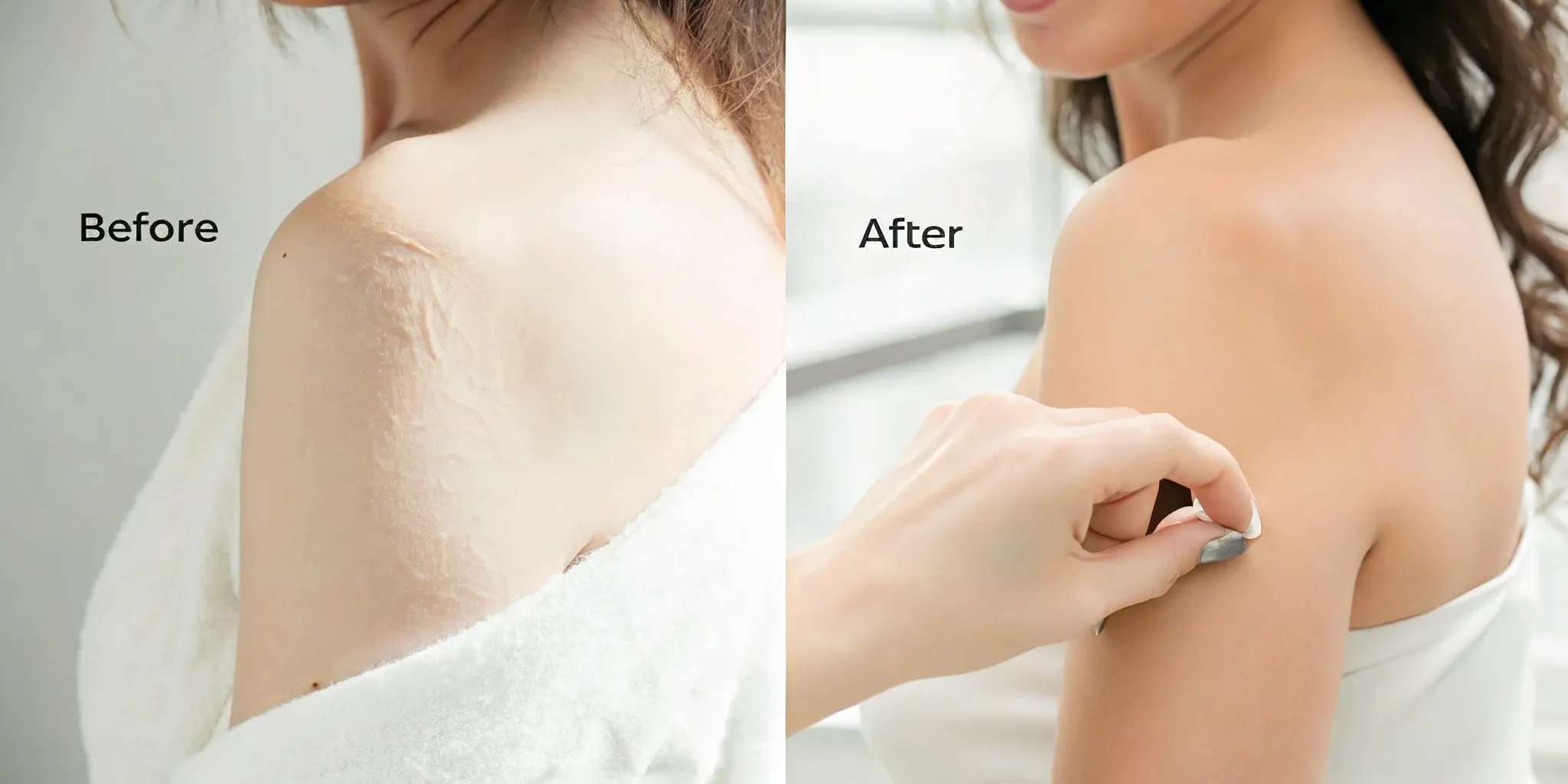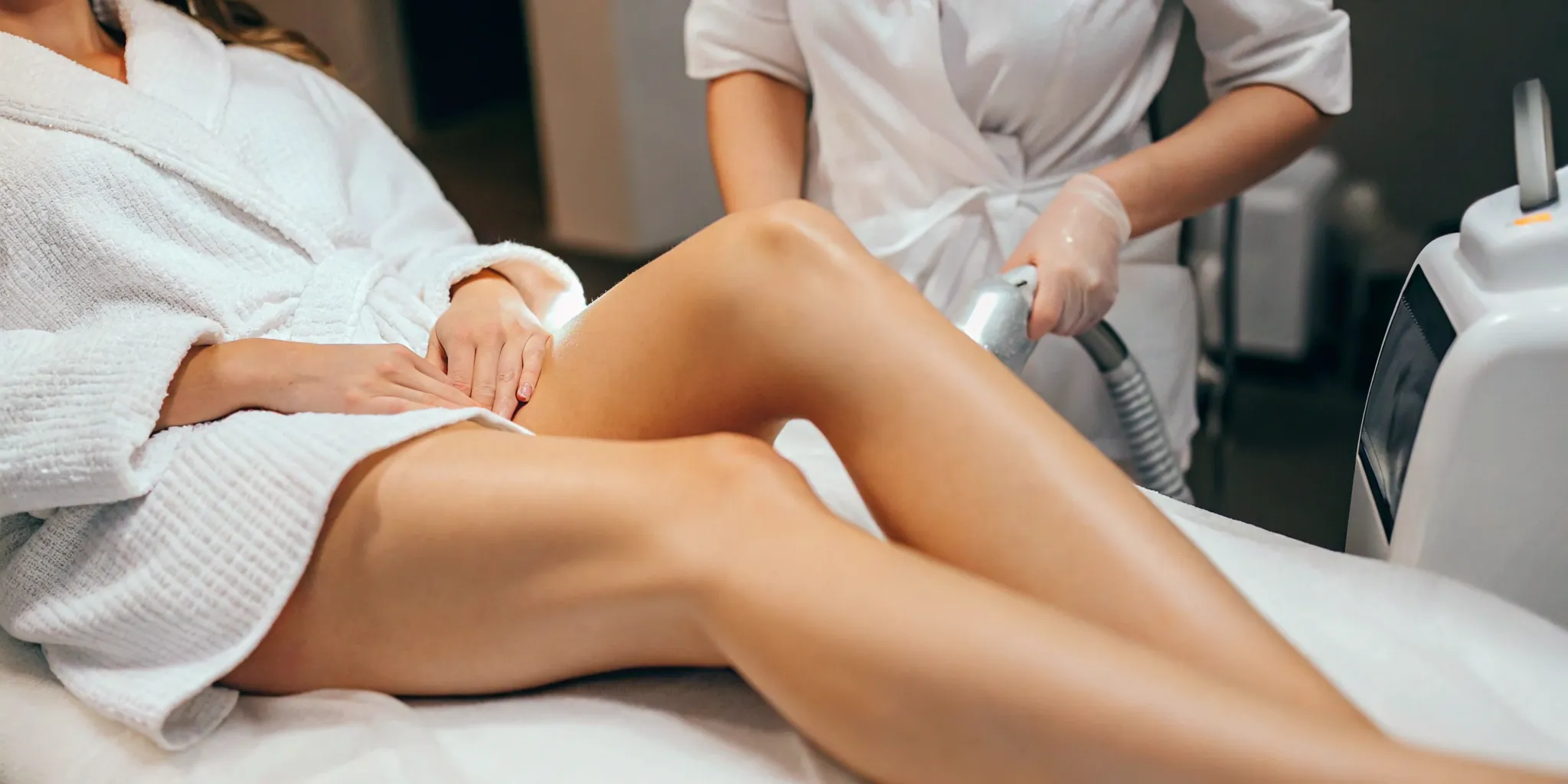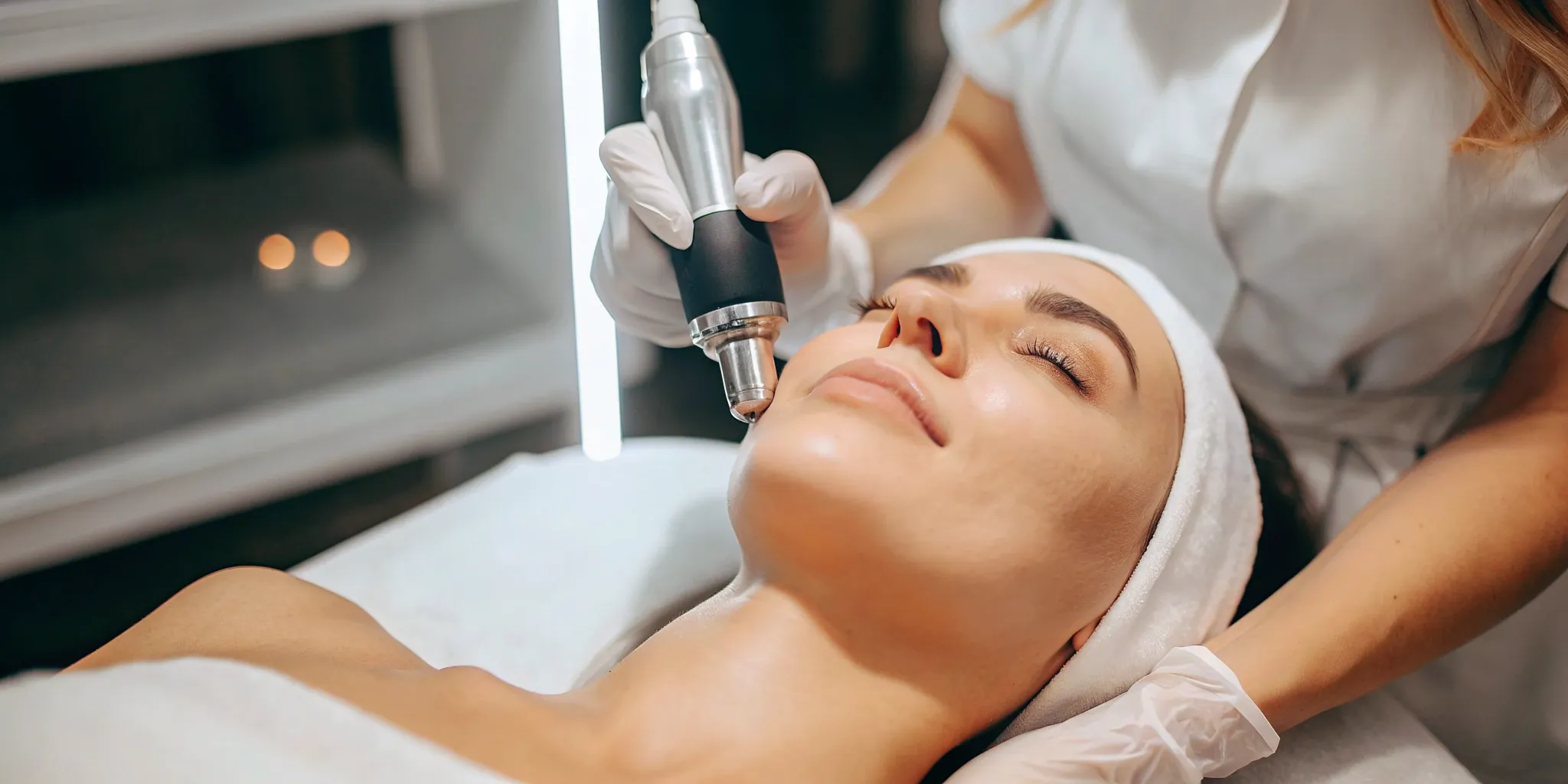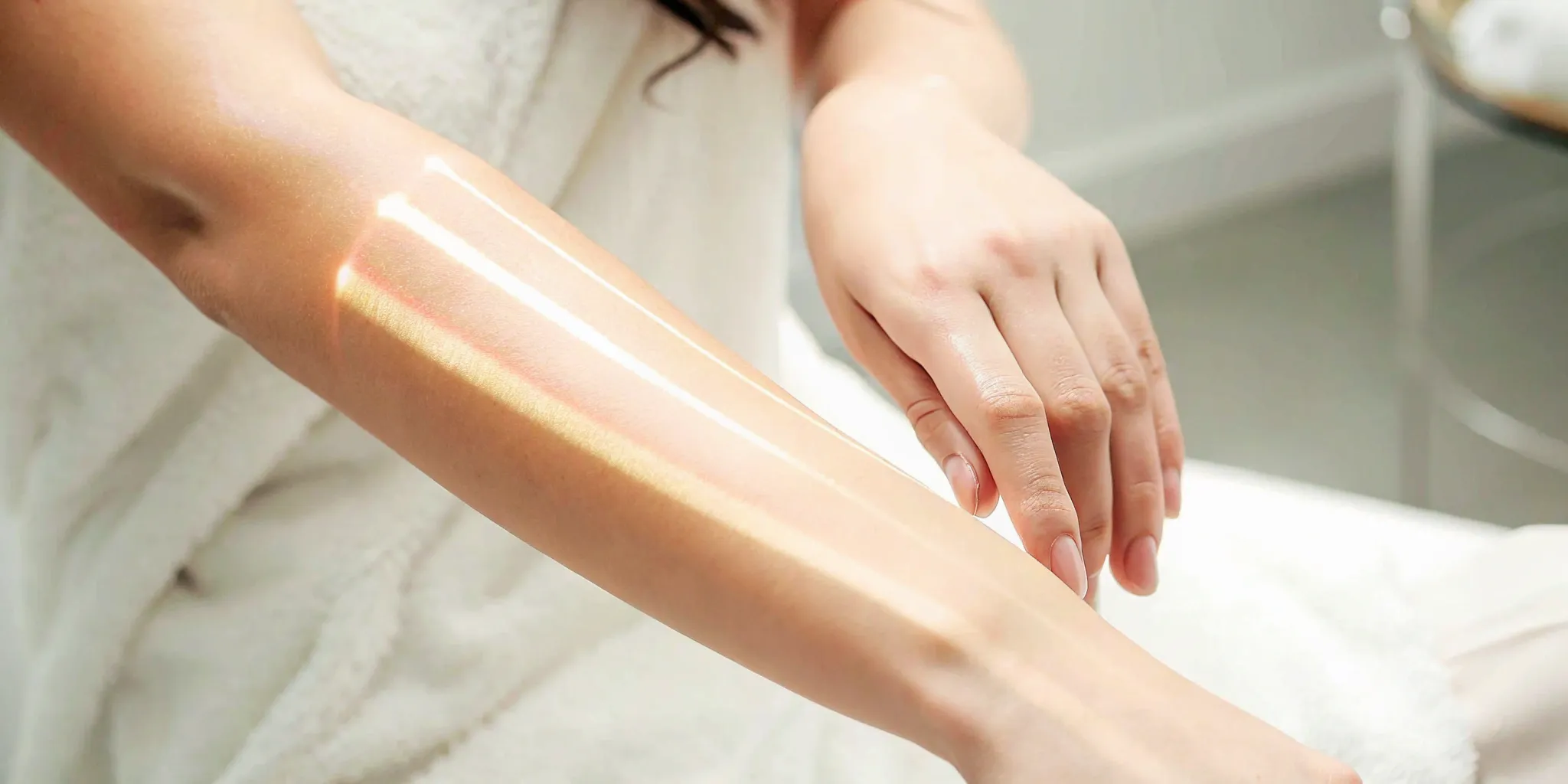That tattoo you got years ago might not feel like you anymore. Tastes change, life moves on, and what once felt like a permanent statement can now feel like a chapter you’re ready to close. If you’re thinking about clear skin, you’re probably filled with questions. Does it hurt? How much does it cost? Will it even work on my tattoo? The good news is that modern tattoo removal is more effective and accessible than ever. This guide is here to walk you through the entire process, answering your biggest questions and giving you the confidence to take the next step.
Key Takeaways
- The Laser and Your Body Work in Partnership: The laser’s job is to shatter the ink into tiny particles, but your immune system is what actually removes them. This teamwork is why multiple sessions spaced weeks apart are essential for achieving clear skin.
- Your Tattoo’s Details Determine Your Journey: Factors like ink color, size, and location directly influence your treatment plan, from the number of sessions to the final cost. Black ink typically fades fastest, while tattoos on hands or feet may take longer to clear.
- Your Choices Directly Impact Your Safety and Results: The most critical decisions you’ll make are choosing a certified provider with quality equipment and diligently following your aftercare instructions, especially when it comes to protecting your skin from the sun.
How Does Tattoo Removal Work?
If you’re thinking about parting ways with a tattoo, you’ve probably wondered what the process actually looks like. The most common and effective method by far is laser tattoo removal, a technology designed to fade and erase ink without significant damage to the surrounding skin. Think of it less like an eraser and more like a gradual fading process. The laser targets the pigment in your skin, breaking it down into smaller pieces that your body can naturally clear away.
This isn’t a one-and-done treatment. Because tattoo ink is layered deep within the skin, it takes multiple sessions to break it all down. Each treatment targets a new layer of ink, and the time between your appointments gives your body the chance to heal and flush out the fragmented particles. While other methods exist, laser technology has become the gold standard because it offers the best results with the lowest risk of scarring when performed by a trained professional. It’s a journey, but understanding how it works is the first step toward clear skin.
The Science of Laser Removal
So, how does a beam of light make ink disappear? It’s pretty fascinating. During a laser removal session, a specialized laser sends an intense pulse of light energy into your skin. This light is specifically calibrated to be absorbed by the tattoo ink particles, not the surrounding skin tissue. When the ink absorbs this energy, it heats up instantly and shatters into tiny, microscopic fragments. Once the ink particles are small enough, your body’s immune system kicks in, recognizes them as waste, and gradually flushes them out over several weeks. This is why you see the tattoo fade more and more after each treatment.
Common Lasers for Tattoo Removal
Not all tattoos are created equal, and neither are the lasers used to remove them. The key to effective removal is using the right wavelength of light for the right ink color. Black ink is the easiest to treat because it absorbs all laser wavelengths, making it highly responsive to treatment. Colorful tattoos are a bit more complex. Different colors, like green, blue, and red, absorb light differently and require specific laser wavelengths to break them down effectively. A professional medspa will use advanced, multi-wavelength laser systems that can be adjusted to target the specific colors in your tattoo, ensuring a more complete and efficient removal process for even the most vibrant designs.
Are There Alternatives to Laser?
While laser removal is the industry standard, you might hear about other methods. These include surgical excision, where the tattooed skin is physically cut out and stitched up, and dermabrasion, which involves sanding down the skin’s top layers. However, these alternatives come with significant drawbacks. Surgical excision is effective but is guaranteed to leave a scar and is only practical for very small tattoos. Dermabrasion can be painful, cause extensive skin irritation, and is often less effective at removing all the ink. For these reasons, laser removal remains the preferred choice for most people, as it targets only the ink and preserves the surrounding skin.
What Factors Affect Your Results?
If you’re considering saying goodbye to some old ink, you’re probably wondering what your results will look like. The truth is, tattoo removal is a highly personal journey, and the outcome depends on a unique combination of factors. Think of it less like an eraser and more like a fading process that your body helps with. Everything from the colors in your tattoo to its location on your body can influence how many sessions you’ll need and how completely the ink disappears. It’s a team effort between the laser technology and your own body’s ability to heal and clear the ink particles.
The good news is that modern laser technology has made it possible to remove most tattoos effectively. However, understanding the variables at play will help you set realistic expectations from the start. Your provider will walk you through all of this during your consultation, but it’s helpful to go in with some knowledge. Knowing what to expect can make the entire process feel more manageable and empower you to take an active role in your treatment. The best first step is always a one-on-one chat with a professional who can assess your specific tattoo and create a personalized treatment plan just for you.
How Ink Color and Type Impact Removal
Not all inks are created equal when it comes to laser removal. Generally, black ink is the easiest to treat. Because black pigment absorbs all laser wavelengths, it breaks down more efficiently than other colors. On the other hand, lighter and brighter colors like green, yellow, and light blue can be more stubborn. These colors require specific laser wavelengths to target them effectively, which might mean more sessions are needed. The type and quality of the ink, as well as how densely it was packed into your skin, also play a significant role in your laser tattoo removal journey. Professional tattoos often have more ink, set deeper, than amateur ones, which can also affect the timeline.
Does Tattoo Age and Placement Matter?
Yes, both the age of your tattoo and its location on your body can affect the removal process. Older tattoos are often easier to remove because your body has already had years to break down some of the ink, causing it to naturally fade over time. This gives the laser a bit of a head start. Placement is also key. Tattoos located closer to your heart, like on your chest or back, tend to fade faster due to better blood circulation. Your circulatory system is what flushes away the shattered ink particles, so areas with stronger blood flow respond more quickly to treatment than tattoos on your hands or feet, where circulation is less robust.
Your Skin Type and Removal
Your skin tone is a crucial factor in determining the right approach for tattoo removal. While the procedure is safe for all skin types, darker skin tones require a more careful and specialized technique to prevent changes in skin pigmentation. At Ultimate Image MedSpa, we use advanced lasers, like the Q-switched Nd:YAG, which are specifically designed to be safe and effective for darker skin. An experienced provider will know exactly how to adjust the laser settings to target the tattoo ink without affecting the surrounding skin. This ensures your safety and delivers the best possible results across all our aesthetic services, so you can feel confident in your care.
Why Your Health Plays a Role
Your body is your best partner in the tattoo removal process. The laser works by shattering the ink particles into tiny fragments, but it’s your immune system that does the work of clearing those fragments away. Because of this, your overall health plays a direct role in how well and how quickly your tattoo fades. A strong immune system can process the ink particles more efficiently. Simple lifestyle choices, like staying hydrated, getting enough sleep, and not smoking, can make a real difference in your results. The original tattoo application—specifically how deep the ink is and how much was used—also impacts the process. A consultation will help determine the best path forward based on your health and your tattoo’s characteristics.
How Much Does Tattoo Removal Cost?
Let’s talk about one of the biggest questions on your mind: the price tag. The cost of tattoo removal is an investment in yourself, but it’s not a one-size-fits-all number. The total price depends entirely on your unique situation, including the tattoo you want to remove and the number of sessions you’ll need to achieve your desired results.
Think of it less like a single purchase and more like a treatment plan. During your consultation, a specialist will assess your tattoo and give you a clear estimate of the overall cost. This transparency is key, so you can plan your budget and feel confident moving forward. While it requires a financial commitment, remember that you’re paying for professional expertise and advanced technology to ensure your skin is treated safely and effectively.
Factors That Determine the Price
The final cost of your laser tattoo removal journey is shaped by a few key factors. First is the size of your tattoo—a small wrist tattoo will naturally cost less per session than a full sleeve. The colors in your tattoo also play a big role. Black ink is generally the easiest to remove because it absorbs all laser wavelengths, while lighter colors like green, blue, and yellow can be more stubborn and may require more specialized laser treatments. Finally, your skin type is considered to ensure the laser settings are perfectly calibrated for you, which can influence the treatment plan and overall cost.
Estimating Your Number of Sessions
Patience is a virtue when it comes to tattoo removal. This isn’t a one-and-done procedure; it’s a process that unfolds over several months. Most people need between 6 and 12 sessions to see the best results, though some may need more. These appointments are typically spaced about 6 to 14 weeks apart to give your skin ample time to heal and your body’s immune system time to flush out the broken-down ink particles. The exact number of treatments you’ll need is unique to you. The best way to get a personalized estimate is to schedule a consultation with a professional who can assess your tattoo in person.
Available Payment Plans
Investing in tattoo removal can feel like a big step, but many providers offer ways to make it more manageable. One of the most common options is purchasing a package of multiple sessions upfront. This often comes with a discount, reducing the cost of each individual treatment and saving you money in the long run. It’s always a good idea to ask about payment plans or package deals during your consultation. Planning ahead can help you budget for your full course of treatment services without financial stress, allowing you to focus on the excitement of seeing your old ink fade away.
Will Insurance Cover It?
In nearly all cases, insurance will not cover tattoo removal. Because it’s considered an elective cosmetic procedure rather than a medical necessity, you should plan for it to be an out-of-pocket expense. This is also why it’s so important to avoid DIY removal kits or untrained technicians. Healthcare providers strongly advise against attempting to remove a tattoo yourself, as it can lead to infection, burns, and permanent scarring. Instead, invest in your safety and results by working with a reputable medical spa or dermatologist who specializes in tattoo removal. This ensures you receive the highest standard of care from start to finish.
How to Prepare for Tattoo Removal
Deciding to remove a tattoo is a big step, and knowing how to prepare can make the entire process smoother and more effective. Proper preparation helps your skin respond better to the treatment and can even improve your results. It all starts with your initial consultation and continues with a few simple steps before each session. Think of it as setting the stage for a successful removal. By taking care of your skin and managing your expectations, you’re partnering with your provider to achieve the best possible outcome. Let’s walk through exactly what you need to do.
What to Expect at Your Consultation
Your journey begins with a one-on-one consultation. This meeting is your chance to ask every question you have and for us to create a personalized treatment plan. We’ll assess your tattoo, looking at its size, location, colors, and age. We’ll also discuss your health history and skin type to ensure laser removal is a safe option for you. One of the most important topics we’ll cover is sun exposure. You’ll need to keep the tattooed area out of the sun and away from tanning beds for at least four weeks before your first treatment. UV exposure can make your skin more sensitive and increase the risk of complications. Ready to get started? You can schedule a consultation with our team to get a plan tailored just for you.
Steps to Take Before Your Session
On the day of your appointment, a little prep work goes a long way. First, make sure the area is clean. You can wash it with soap and water, but skip the moisturizer or any lotions for that day. If there’s hair over your tattoo, it’s a good idea to shave the area beforehand. This helps the laser reach the ink more effectively without interference. Also, focus on staying hydrated in the days leading up to your session by drinking plenty of water. Healthy, hydrated skin tends to heal better. Following these simple steps helps ensure your laser tattoo removal session is as efficient and comfortable as possible.
Your Pain Management Options
Let’s talk about the number one question on everyone’s mind: Does it hurt? While it’s not completely painless, most people say it feels like a rubber band snapping against the skin—uncomfortable, but tolerable. The good news is that modern laser technology has made the process much more comfortable than it used to be. We also have several options to help manage any discomfort. We can apply a topical numbing cream before the session or use a special cooling device that blows cold air onto the skin during the treatment. We’ll discuss these pain management techniques with you to decide what makes you most comfortable.
How to Set Realistic Goals
Patience is key when it comes to tattoo removal. It’s not a one-and-done procedure; it’s a process that requires multiple sessions spaced several weeks apart to allow your skin to heal. During your consultation, we’ll give you an estimate of how many treatments you might need. Factors like ink color, tattoo age, and whether it was done by a professional or an amateur all play a role. For example, black ink is typically the easiest to remove, while lighter colors can be more stubborn. Our goal is to be transparent and help you set realistic expectations for your final results. We offer a wide range of aesthetic services and are committed to guiding you through every step of your journey.
What Happens During a Treatment Session?
Walking into your first tattoo removal appointment can feel a little nerve-wracking, but knowing exactly what to expect can make all the difference. The process is straightforward, and each step is designed with your safety and comfort in mind. From the moment you sit down for your treatment to the simple aftercare you’ll follow at home, we’re here to guide you. Think of this as your roadmap for a single session, giving you a clear picture of the procedure, what your skin will feel like right after, and how to manage your recovery. We’ll break down the timeline and share some great tips for making the entire experience as comfortable as possible. Let’s walk through it together so you can feel confident and prepared for your journey to clear skin.
A Step-by-Step Look at the Procedure
So, what actually happens when the laser gets to work? The technology is pretty fascinating. The laser sends a highly concentrated beam of light energy directly into the tattoo ink. This light is absorbed by the ink particles, causing them to heat up and shatter into tiny fragments. Your body’s amazing immune system then steps in, recognizes these tiny particles as waste, and gradually flushes them out. Because tattoo ink is settled in multiple layers within your skin, a single session can’t break it all down at once. That’s why a series of laser tattoo removal treatments is needed to target each layer and achieve the best results.
Right After Your Session: What to Do
Immediately after the laser does its thing, you’ll notice some changes in the treated area. It’s common for the skin to look a bit red, feel tender, or appear slightly swollen. You might also see a temporary “frosting” effect, where the skin turns a chalky white—this is a normal reaction that usually fades within minutes. These are all positive signs that the treatment has effectively targeted the ink and your body is beginning its natural healing process. These effects are temporary and typically calm down within a few hours to a couple of days. We’ll give you specific aftercare instructions to help soothe your skin and ensure a smooth recovery.
Your Recovery Timeline
Patience is a key part of the tattoo removal process. Most tattoos require between six and ten treatments to see full removal, though this can vary based on your tattoo’s specifics. Your sessions will be scheduled about six to eight weeks apart. This waiting period is crucial and non-negotiable. It gives your skin the time it needs to heal completely and, just as importantly, allows your body’s lymphatic system enough time to break down and clear away the shattered ink particles. Rushing the process won’t speed up your results and can compromise your skin’s health, so trusting the timeline is the best way to get the clear skin you’re looking for.
Tips for Managing Discomfort
Let’s talk about what the treatment feels like. Many people compare the sensation to a rubber band snapping against the skin—it’s quick and manageable. Your comfort is our top priority, and we have ways to make the experience as easy as possible. Before the session begins, we can apply a topical numbing cream to the area to significantly reduce any discomfort. You can relax knowing that we’ll take every step to ensure you’re comfortable from start to finish. If you have any concerns about pain, be sure to contact us to discuss your options before your appointment.
Your Complete Aftercare Guide
Proper aftercare is just as important as the laser session itself. How you care for your skin between appointments directly impacts your healing, comfort, and final results. Following these steps helps the laser work more effectively and keeps your skin healthy. It’s all about creating the best environment for your body to flush away ink and regenerate clear skin. Taking these steps seriously makes your entire laser tattoo removal experience smoother.
Caring for the Treated Area
It’s normal to see some redness and swelling, much like a sunburn, which usually calms down within a couple of days. To soothe the area, gently apply a cold compress for 10-15 minutes at a time. We’ll apply an antibiotic ointment and a sterile bandage right after your treatment. Your job is to keep the area clean and protected for the first few days to prevent irritation or infection as it begins to heal.
Activities to Avoid During Healing
Your skin is sensitive after treatment, so it needs a break. The most important thing to avoid is sun exposure. Keep the area out of the sun for at least two weeks, and use a high-SPF sunscreen if you must be outside. Also, avoid soaking the area in water—skip baths, hot tubs, and pools for a few days. When you shower, let water run over the area gently without scrubbing. It’s also wise to take a day or two off from strenuous exercise.
Products That Help Healing
You only need a few key products. For the first few days, apply a thin layer of an antibiotic ointment like Aquaphor to keep the area moisturized and protected under a fresh, sterile bandage. After about three days, you can stop the ointment and focus on keeping the skin hydrated with a gentle, fragrance-free moisturizer. Proper skincare is essential for helping your skin recover beautifully.
When to Call Your Provider
We are here to support you. While minor redness and swelling are normal, call us if you experience severe pain, excessive swelling, or signs of infection like pus or spreading redness. Blistering can sometimes occur; while often normal, let us know so we can advise you. If you have any questions or if something just doesn’t feel right, it’s always better to be safe and contact us. Your peace of mind is our priority.
How to Choose the Right Provider
Selecting the right person to remove your tattoo is the single most important decision you’ll make in this process. This isn’t just a simple cosmetic treatment; it’s a medical procedure that requires skill, experience, and a deep understanding of skin and laser technology. The provider you choose will directly impact your results, your safety, and your overall experience. Taking the time to find a qualified professional ensures you’re in good hands and on the right path to clear, healthy skin. Think of it as choosing a partner for your journey—you want someone knowledgeable, trustworthy, and dedicated to helping you achieve your goals safely.
Look for These Certifications
When you start your search, prioritize providers with the right credentials. Look for a clinic that is medically supervised, meaning a doctor oversees the treatments. The technicians performing the removal should be certified laser specialists with extensive training in tattoo removal. Don’t hesitate to ask about their qualifications and experience. A reputable provider will be transparent about their team’s training. This ensures the person operating the laser understands the complex science behind the procedure and can handle it with precision and care. A professional medspa will always put certified experts at the forefront of their services, giving you peace of mind that you’re receiving care from someone who truly knows what they’re doing.
The Importance of Quality Equipment
The technology used for your tattoo removal is just as important as the person operating it. The most common and effective method is laser tattoo removal, which uses highly concentrated light beams to heat and shatter the ink particles in your skin. Your body’s immune system then naturally flushes these tiny particles away. Top-tier clinics invest in advanced laser systems, like the PicoWay or Q-switched lasers, because they can target a wide range of ink colors more effectively and with less risk to the surrounding skin. Outdated or low-quality equipment can lead to disappointing results or, worse, unnecessary side effects. A provider with quality equipment shows a commitment to delivering the best, safest outcomes for their clients.
Key Safety Protocols to Check For
Your safety should always be the top priority. A professional and trustworthy clinic will adhere to strict safety protocols. During your initial visit, take a look around. The treatment rooms should be clean and sterile, just like any other medical office. The provider should conduct a thorough health assessment during your consultation to ensure you’re a good candidate for the procedure. During the treatment itself, both you and the technician should wear protective eyewear. A great provider will also give you detailed aftercare instructions to prevent infection and promote healing. When a clinic follows these safety measures, it’s a clear sign that they are dedicated to your health and well-being.
Questions to Ask During Your Search
Your consultation is the perfect opportunity to get all your questions answered and feel confident in your choice. Don’t be shy—a good provider will welcome your inquiries. Come prepared with a list of questions to help you vet your options. Consider asking things like: “What type of laser will you use on my tattoo?”, “Based on my tattoo’s size and color, how many sessions do you estimate I’ll need?”, “Can I see before-and-after photos of your previous clients with similar tattoos and skin tones?”, and “What are the potential risks or side effects I should be aware of?”. The answers you receive will tell you a lot about their expertise and approach. When you’re ready, you can schedule a consultation to discuss your specific needs with a professional.
What to Expect on Your Removal Journey
Tattoo removal is a process that unfolds over several months. Think of it less like a single appointment and more like a partnership between you and your technician. Your body does a lot of the heavy lifting between sessions, and your commitment to the full treatment plan is what ultimately leads to clear skin. Knowing what to expect from start to finish can make the entire experience feel more manageable and empower you to take an active role in your results. From seeing the ink fade over time to knowing how to care for your skin, here’s a look at the road ahead.
How to Track Your Progress
Patience is key when it comes to tattoo removal. You won’t see the tattoo vanish after one session; instead, you’ll notice it gradually fading over time. Most people need between 6 to 10 treatments to achieve their desired results. We schedule these sessions about 6 to 8 weeks apart to give your skin ample time to heal and for your body’s immune system to flush out the shattered ink particles. A great way to see the change is by taking photos before each appointment. This helps you visualize the progress and stay motivated throughout your laser tattoo removal journey, even when the day-to-day changes seem small.
Understanding Common Side Effects
It’s completely normal to experience some side effects after a laser session, but they are typically mild and temporary. You might notice some redness, swelling, tenderness, or even small blisters in the treated area—this is just your body’s natural healing response kicking in. These effects usually calm down within a few days. One of the biggest myths about tattoo removal is that it always causes scarring. While any procedure has risks, modern lasers are specifically designed to target ink without harming the surrounding skin, making scarring very unlikely when performed by a trained professional. Our team is committed to providing safe and effective services to minimize any risks.
Caring for Your Skin Long-Term
How you care for your skin between appointments plays a huge role in your final results and helps prevent complications. Immediately after your session, it’s a good idea to apply a cold pack to soothe the area. We’ll provide you with specific aftercare instructions, which usually include applying an antibiotic ointment and keeping the area covered with a bandage for the first day or so. Long-term, be gentle with your skin—avoid scrubbing the area in the shower. Most importantly, protect your skin from the sun. UV exposure can interfere with the healing process, so applying a broad-spectrum sunscreen daily is non-negotiable. If you have any questions about your aftercare routine, please don’t hesitate to contact us.
The Role of Follow-Up Treatments
Completing your full course of treatments is essential for getting the clear skin you want. Tattoo ink is settled in multiple layers within your skin, and a single laser session can only break up the topmost layer. Each follow-up appointment targets a deeper layer of ink, gradually clearing the tattoo. Your body also needs time between these sessions to do its job of carrying away the tiny ink particles that the laser shattered. That’s why sticking to the recommended schedule of 6 to 12 or more sessions is so important. Committing to the entire process ensures that we can remove the ink as thoroughly and safely as possible, giving you the best outcome.
Related Articles
- Laser Tattoo Removal | Everything You Need to Know
- Laser Tattoo Removal | Everything You Need to Know
Frequently Asked Questions
Is tattoo removal really painful? This is the number one question I get, and the honest answer is that it can be uncomfortable, but it’s very manageable. Most people describe the sensation as a quick, sharp snap, similar to a rubber band hitting the skin. The good news is that a single laser pulse is over in a fraction of a second. We also have great methods to keep you comfortable, like applying a topical numbing cream before we start or using a cooling device that blows cold air on your skin during the treatment.
Will my tattoo be 100% gone after treatment? The goal of laser tattoo removal is to fade the ink until it’s no longer noticeable. For many people, this means achieving complete clearance, but results can vary. Factors like the colors and type of ink used, how deep the ink is, and your own body’s immune response all play a part. Black ink, for instance, tends to respond best. We will set clear and realistic expectations with you during your consultation so you know what outcome to anticipate for your specific tattoo.
Why do I have to wait so long between sessions? The waiting period between your appointments is one of the most important parts of the process. The laser’s job is to shatter the ink particles, but your body’s immune system does the hard work of actually clearing those particles away. This natural flushing process takes time. Scheduling sessions about six to eight weeks apart gives your skin the time it needs to heal completely and allows your body to remove the maximum amount of ink, making your next treatment even more effective.
I have a colorful tattoo. Can it still be removed? Yes, colorful tattoos can absolutely be removed, but they do present more of a challenge than simple black ink. Different colors absorb light differently, so they require specific laser wavelengths to break them down effectively. Colors like green, blue, and yellow can be particularly stubborn. This is why it’s so important to choose a provider with advanced, multi-wavelength laser systems that can be adjusted to target the specific colors in your design for the best possible results.
What’s the biggest mistake people make during tattoo removal? The most significant mistake is not taking aftercare seriously, especially when it comes to sun exposure. Protecting the treated area from the sun is critical for proper healing and preventing skin discoloration. Sun exposure can make your skin more sensitive and interfere with the laser’s effectiveness. Following your aftercare instructions to the letter gives you the best chance at achieving clear, healthy skin without complications.







